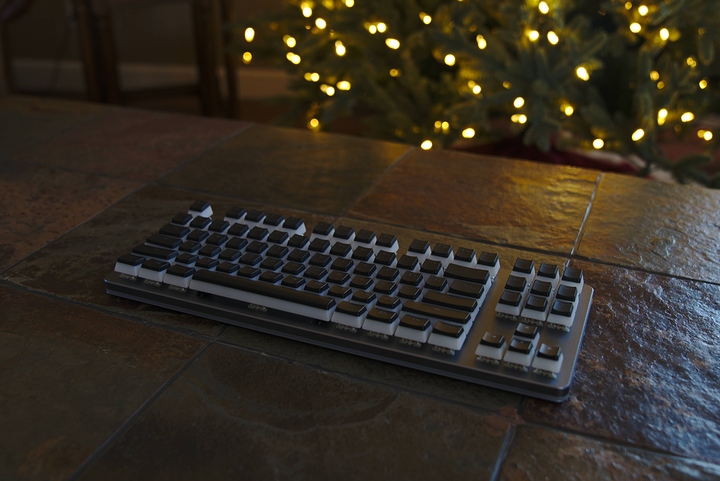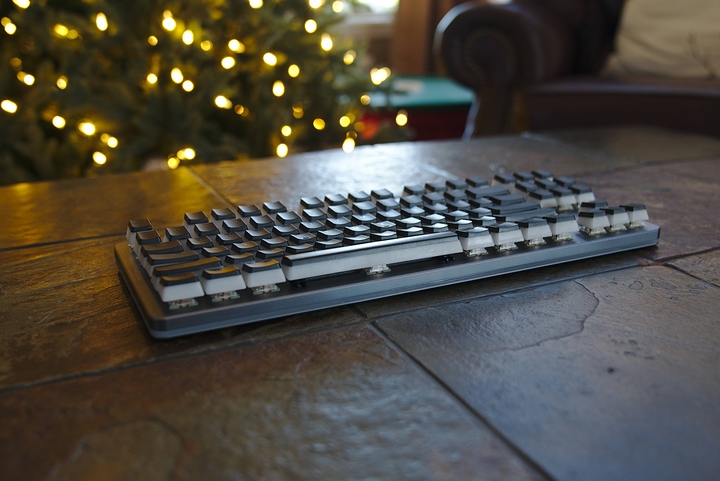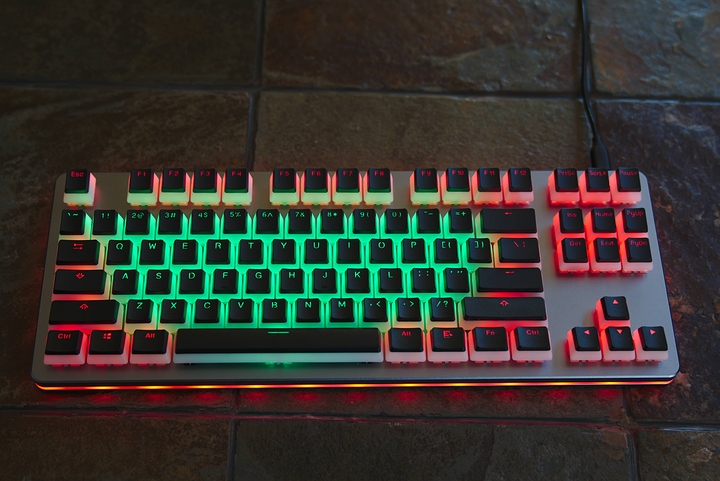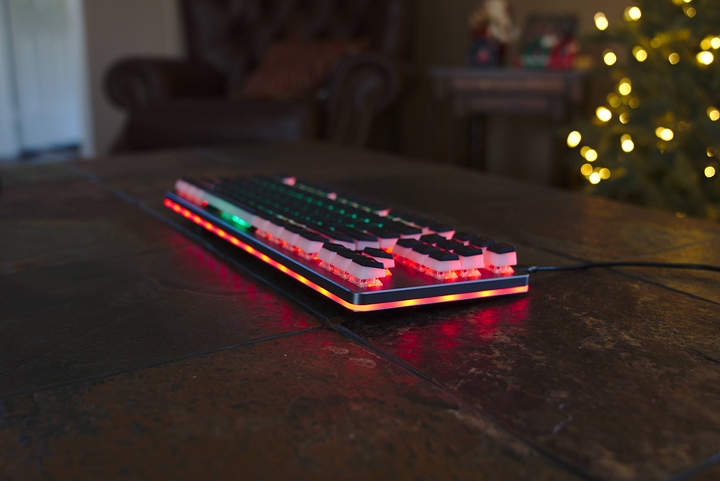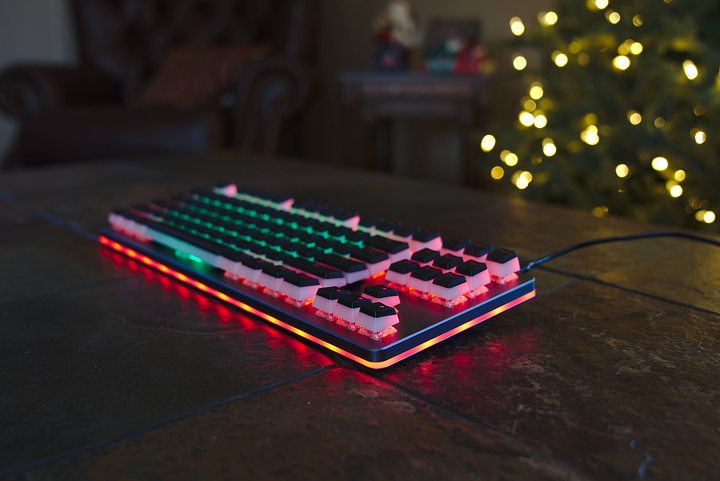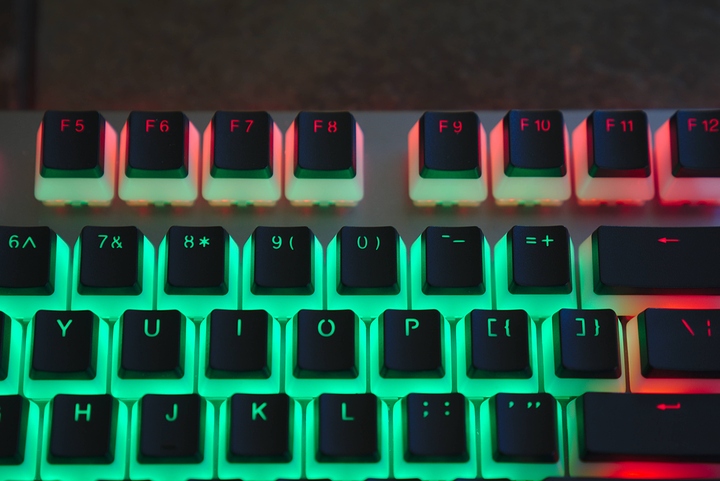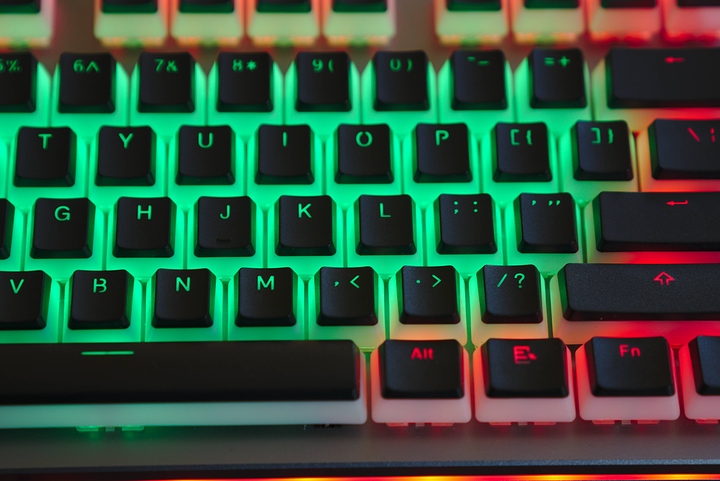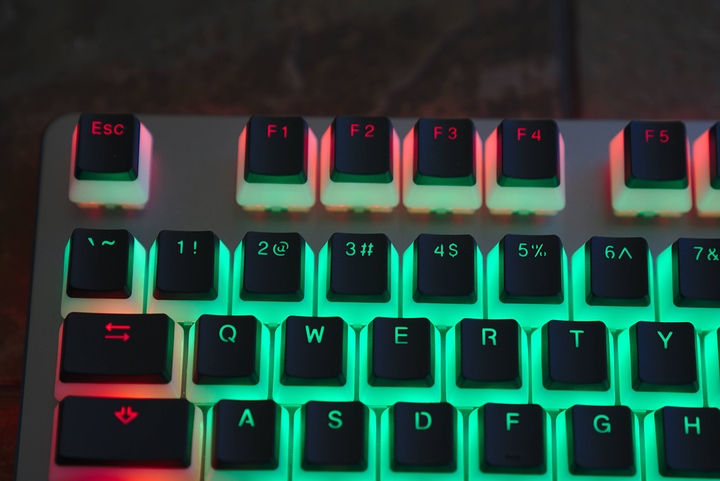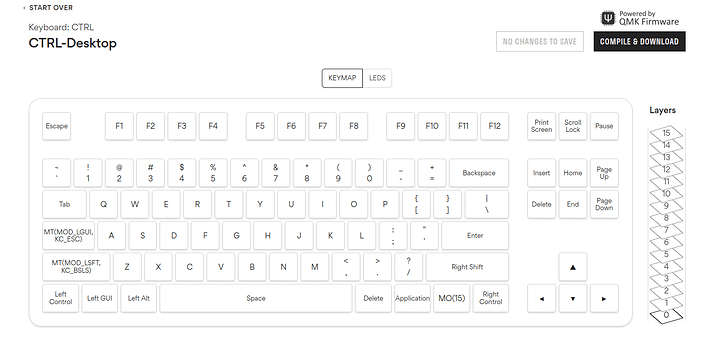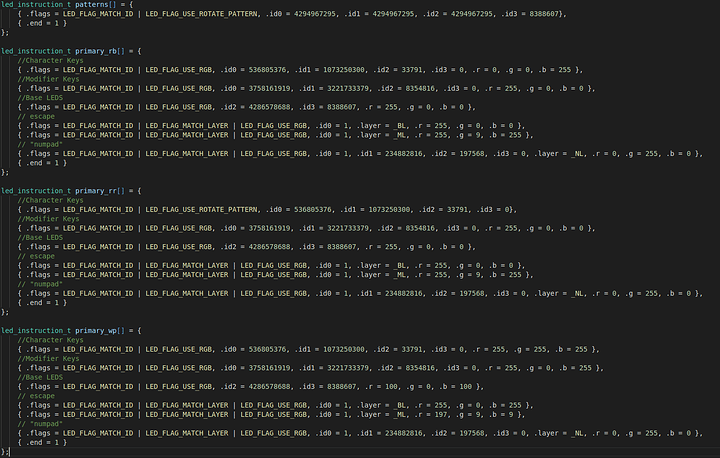We wish you a Merry Christmas!
Tonight we’re going to review the Drop CTRL, the tenkeyless mechanical keyboard entry to the group-buy giant’s line of bespoke enthusiast hardware. The CTRL fits snugly in the middle of the Drop Mechanical keyboard line, with the aptly named ALT and SHIFT, sporting 60% and 1800 layouts, respectively.
So, let’s start with the shipping/packaging experience.
The keyboard came with retail packaging encased in a standard shipping box. Not much to note here, the packaging is satisfactory, but nothing to write home about.
Included in the box is the following:
- Keyboard itself
- Keycap puller
- Keyswitch puller
- two magnetic tenting feet
- USB A to C cable
Physical
This board is stunningly beautiful. My camera work simply cannot do it justice. (I’m working on it)
The keyboard is made of solid aluminum and has a beautifully textured finish. The base has a ring of LEDs that wrap around the keyboard, each individually addressable and fully controllable by the QMK firmware. It should be noted that the LEDs cause the base to get ever so slightly warm if they’re left on for a few hours. While this isn’t a cause for concern, I wanted to include this in the review. This amount of heat shouldn’t effect anything.
The bottom of the board has 8 holes for the tenting feet. The keyboard, by default, has three positions. Flat, tented forward and tented reverse. I use reverse tenting and find that it helps a lot with wrist flexion. Additionally, the keyboard has a button recessed into the bottom. This is for putting the keyboard into programming mode. (you can also set a keyboard shortcut for this so you don’t have to flip the board over every time)
note the serial number.

from
Something else to note, which I didn’t manage to take a picture of, is that every keyswitch on this board is hot swappable. This means that you can replace switches without taking the board apart and (de)soldering switches on the PCB. The included switch puller makes this a breeze.
Tenting Comparison
Typing experience
Typing on this is an absolute wonder. I’ve gone with Cherry MX Brown RGB switches. Fairly pedestrian when it comes to the exotic keyboard scene, but it’s what I wanted. I am using the Kingston Hyper-X Pudding keycaps, which I’ll link below. I think the etching on these keys is much better than the keys that come with the board itself. For some reason, the keys that come with it are not sharp at all. I would recommend skipping them ($25 option from Drop) if you’re thinking about customizing the board like I did.
Some people on the Drop community thread mentioned pinging, particularly towards the middle of the keyboard. I experienced no such issues. My suspicions are that Drop fixed this on the run that I received.
I get occasional bouncing on the keyboard with the latest firmware that I created, just for this review. (Gotta get those Christmas colors, amirite?) I only mention this because I think this is a setup that many people will be using. The firmware from the Configurator never experienced this issue, so I’m confident it’s something I’ve done wrong or a bug that’s been patched since.
Software
So this is where the review gets complicated. The software is both amazing and horrible at the same time. Drop has a configurator on their site, similar to the QMK configurator, but it allows for per-key RGB addressing. This is great, but the problem is that it’s very barebones when it comes to configuring the actual keys. The Drop configurator will work great for you if you just want to swap some keys around, or put arrow keys on hjkl or something, but I wanted to do more.
As with most situations I run into, this keyboard won’t quite do it all. It gets extremely close but in order to make it do it all, I had to get my hands dirty and jump into the C code. So I pointed my browser to docs.qmk.fm and was immediately greeted with an insane codebase for keyboard firmware. with eleven thousand commits and 1251 contributors, I was extremely impressed with the sheer scope of the project. QMK is no simple keyboard firmware. Drilling down into it, they have support for over 350 different keyboards and at tons of different features.
So, I got cloned the repository and got started. QMK has relatively easy-to-configure matricies to configure the bindings of every single goddamn key on your keyboard. You want RALT, L to insert a Lenny face? Done. Wanna raise your dongers with RALT, D? Not a problem with QMK! What about some more useful things then? The CTRL doesn’t have media keys. However, it does have a dedicated FN key. Now, normally, the layout is RALT, FN, MENU, RCTRL. I didn’t like that, so I swapped FN and MENU. This was extremely easy to do in the firmware. Just swap the order of the keycodes in the base layout matrix and you’re done!
How about lighting? Well, lighting is a bit more complex. That requires some significant changes since proper support for the Drop LED configuration hasn’t landed in master on qmk yet. You’ve got to either manually merge that code in or you’ll be running some slightly outdated (~2000 commits behind master) firmware. I’ve opted to be lazy and not try to merge master into this branch, simply because master doesn’t have any new major features and I am holding out hope that some brave soul will get these features into master soon.
Anyways, now that we’ve clarified the complexity with the lighting, we can talk about how it’s done in the branch I’m using. Who here is familiar with Bit Fields? Well, if you’re not, read up. We use bit fields to address the LEDs we’re programming. There are 119 LEDs on the CTRL, when you include the base leds. Since the CTRL uses a 32 bit ARM processor, we can address 32 at a time. This means we need 4 INTs for every instruction we send the keyboard.
Our final LED Instruction code will look something like this:
If there’s anyone interested in some more detailed instructions on this, I’d be happy to go in depth on this, but it’s really getting a bit off topic for this review.
Conclusion
The CTRL is a great keyboard. I am absolutely in love with it. So much so that I got rid of my MasterKeys S, which proved to be a solid board for me over the course of the last 18 months. While I would avoid the keycaps that come with it, I’d absolutely recommend this board to anyone who wants a tenkeyless board with the ultimate in customizability. With the included tools and firmware choice, Drop has really proven their dedication to the enthusiast community with this board. The CTRL is absolutely worth the premium.
Imgur album of the keyboard: https://imgur.com/a/inyZiAm
Drop CTRL: https://drop.com/buy/drop-ctrl-mechanical-keyboard
Hyper X Pudding Keycaps: https://www.amazon.com/HyperX-Double-Shot-PBT-Keycaps/dp/B07JDVG4RQ

